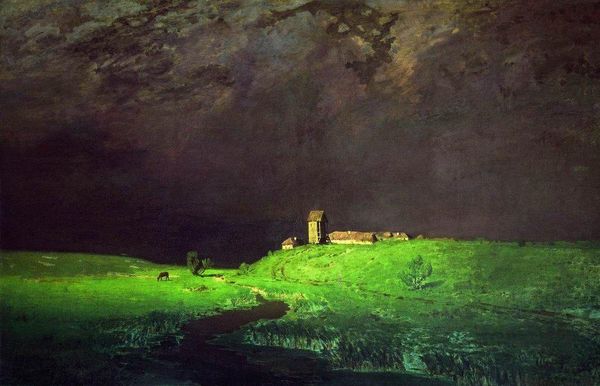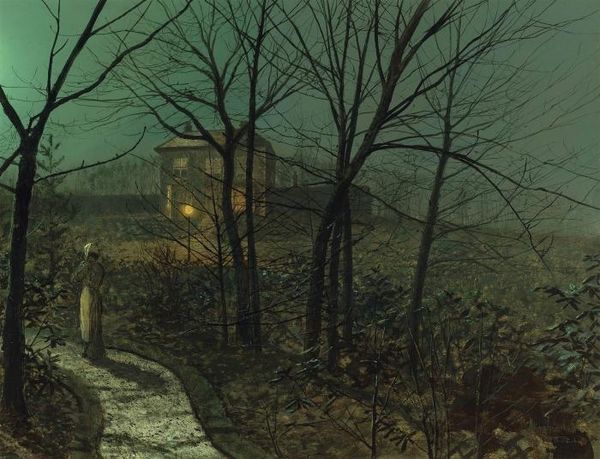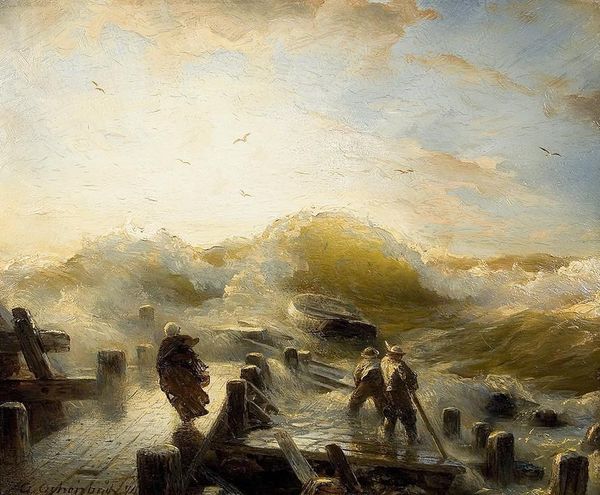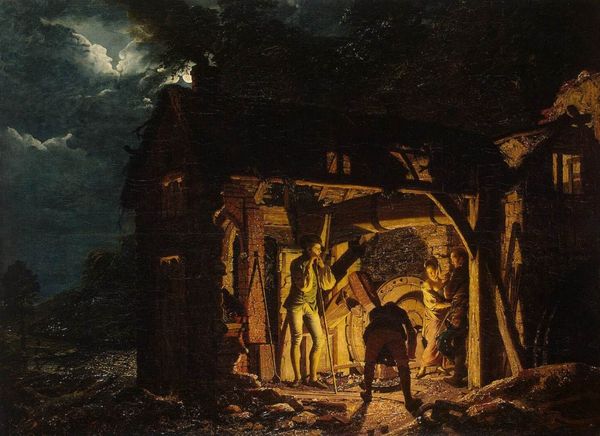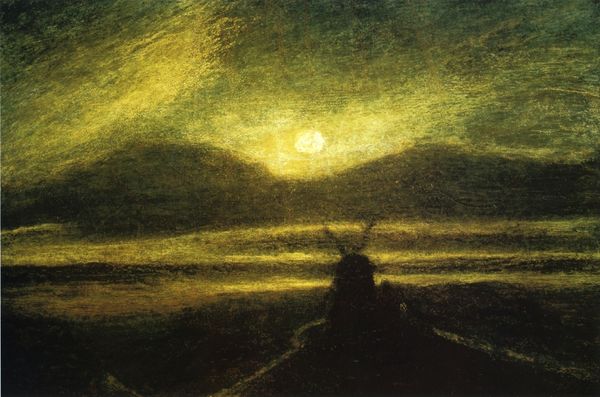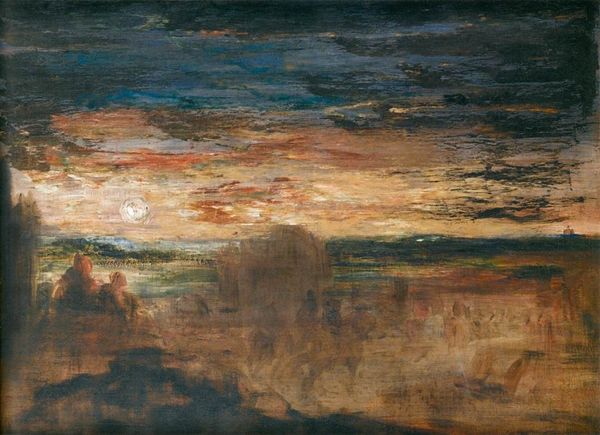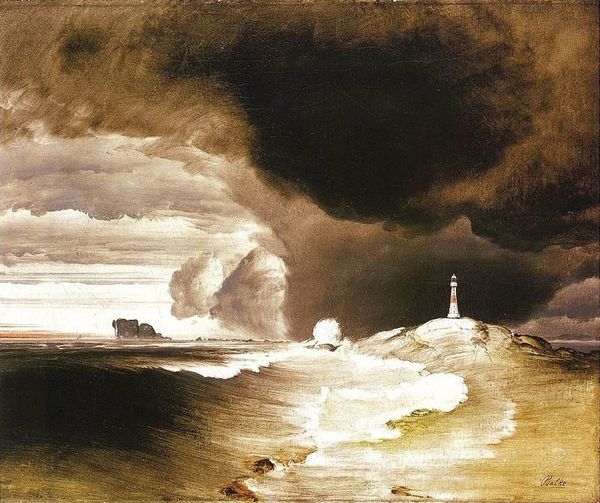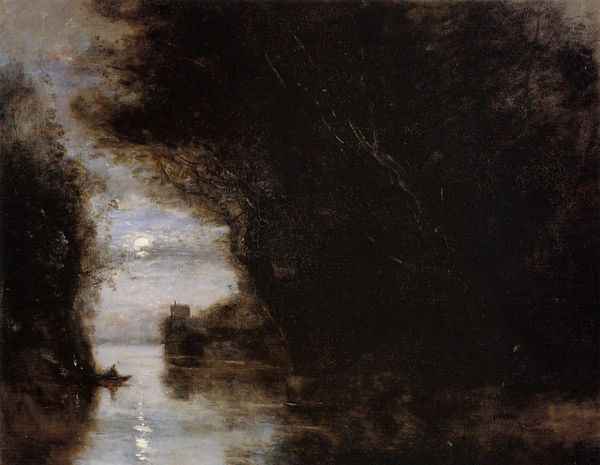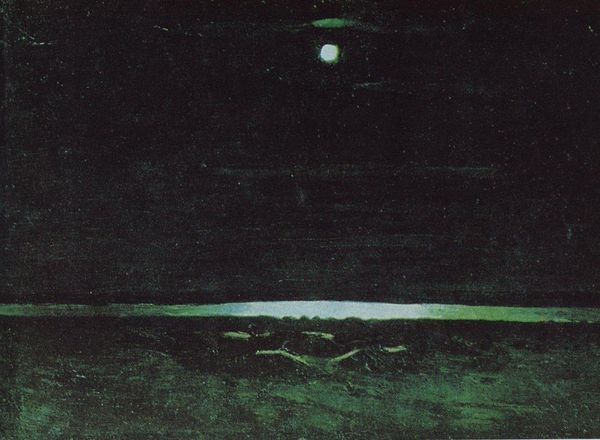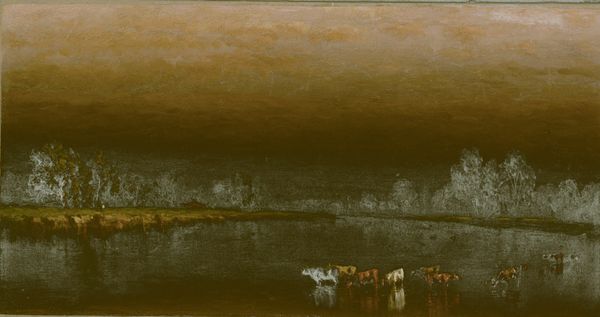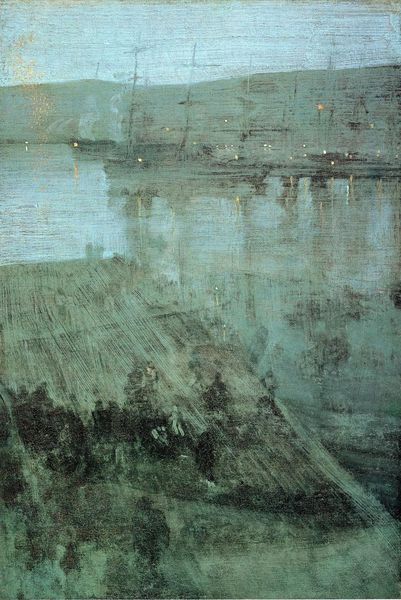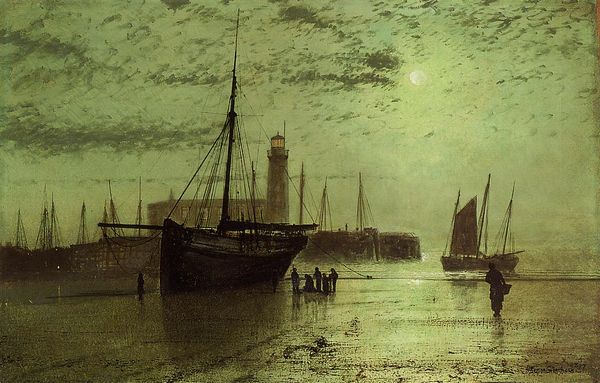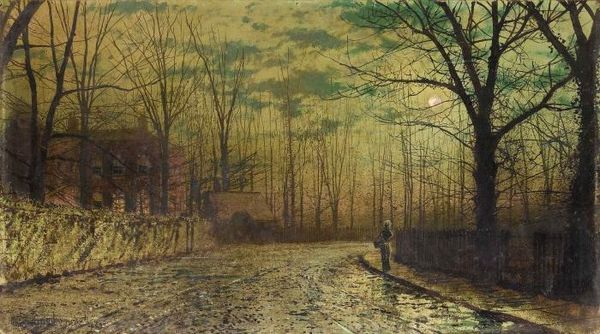
Dimensions: 124.5 x 86.3 cm
Copyright: Public domain
Editor: So, this is "In Peril (The Harbour Flare)," an oil on canvas painted in 1879 by John Atkinson Grimshaw. I'm immediately struck by the contrast between the intense light of the flare and the muted, almost oppressive darkness of the night. It feels staged, theatrical, even. How do you interpret this dramatic scene? Curator: This is a captivating example of how Victorian art grappled with the sublime. Grimshaw, though often labeled a realist, frequently romanticized his urban scenes. I wonder, how complicit was Grimshaw in perpetuating narratives about urban life as inherently dangerous, needing flares of warning and guidance? Notice how the fire acts almost like a stage light, turning the onlookers into an audience observing some unseen drama on the water. Editor: That’s fascinating. I hadn't considered the role of the audience within the painting. Curator: Exactly. And think about who these paintings were for. A rising middle class eager for representations of both the excitement and the perceived perils of modern life. Paintings like this provided a safe, consumable experience of risk, reinforcing certain anxieties, don't you think? Also, observe the fishermen, how they blend with the urban surrounding. It shows that the city is always next to something else and has more perspectives, such as landscape. Editor: So, it's not just about depicting a specific event, but about constructing a narrative about urban life and its dangers for a particular audience. Curator: Precisely! Grimshaw's nocturnes capitalized on and furthered anxieties about the unknown. They solidified certain cultural beliefs about the city as a space requiring vigilance. He provided aesthetic pleasure, of course, but his work also performed a social function. How does that reading sit with you? Editor: That gives me a completely new perspective on Grimshaw's work. I initially saw it as a romantic, dramatic scene, but now I recognize its connection to broader social and political contexts. Thank you. Curator: And thank you, for helping me reconsider Grimshaw's position within the art-historical narrative. It's vital we question these depictions.
Comments
No comments
Be the first to comment and join the conversation on the ultimate creative platform.

